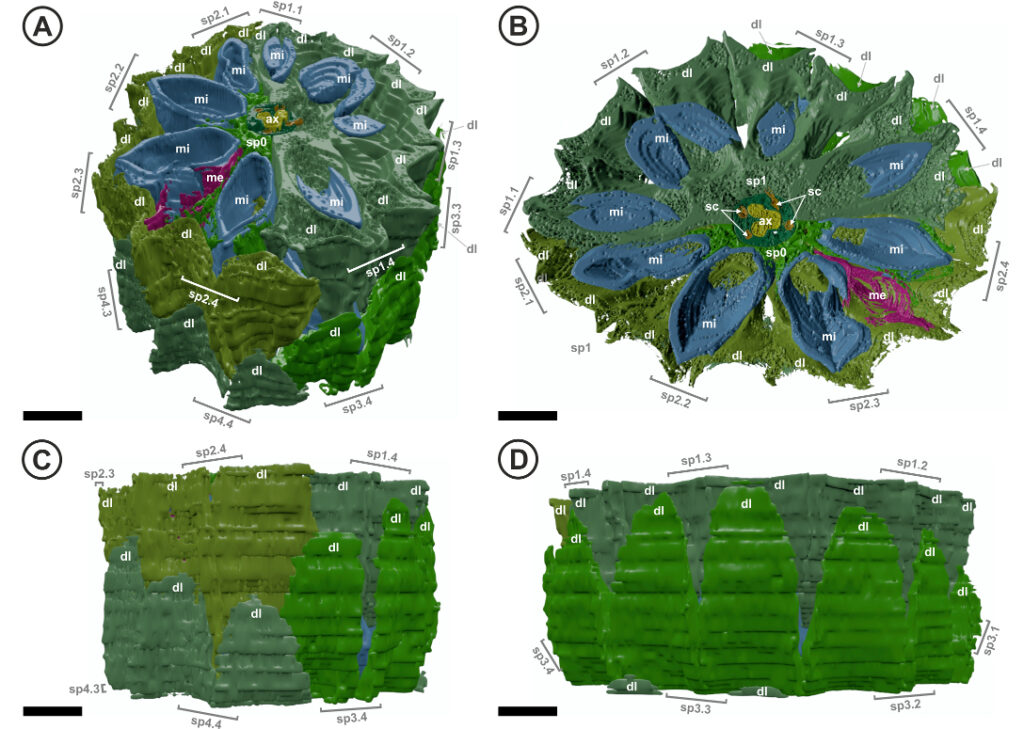Type:
Peer Reviewed Research Paper
Journal:
American Journal of Botany
Year:
January 6 2017
Authors:
Wang S-J, Bateman RM, Spencer ART, Shao L, Wang J, Hilton J
DOI
http://dx.doi.org/10.3732/ajb.1600371
Abstract:
PREMISE OF THE STUDY: Noeggerathiales are an extinct group of heterosporous shrubs and trees that were widespread and diverse during the Pennsylvanian–Permian Epochs (323–252 Ma) but are of controversial taxonomic affinity. Groups proposed as close relatives include leptosporangiate ferns, sphenopsids, progymnosperms, or the extant eusporangiate fern Tmesipteris. Previously identified noeggerathialeans lacked anatomical preservation, limiting taxonomic comparisons to their external morphology and spore structure. We here document from the upper Permian of China the first anatomically preserved noeggerathialeans, which enhance the perceived distinctiveness of the group and better indicate its systematic affinity.
METHODS: We describe in detail the newly discovered, anatomically preserved heterosporous strobilus Dorsalistachya quadrisegmentorum, gen. et sp. nov., and redescribe its suspected foliar correlate, the pinnate leaf Plagiozamites oblongifolius.
KEY RESULTS: Plagiozamites possesses an omega (Ω)-shaped vascular trace and prominent cortical secretory cavities—a distinctive anatomical organization that is echoed in the newly discovered strobili. Dorsalistachya strobili bear highly dissected sporophylls alternately in two vertical rows, suggesting that they are homologs of leaf pinnae. If so, the “strobilus” is strictly a pseudostrobilus and consists of sporangium-bearing units that are one hierarchical level below true sporophylls. The “sporophylls” bear four microsporangia on the lower (abaxial) surface, occasionally interspersed with short longitudinal rows of megasporangia. A single functional megaspore develops within each winged megasporangium, suggesting adaptation for dispersal as a single unit.
CONCLUSIONS: Dorsalistachya presents a unique combination of reproductive features that amply justifies establishment of a new family, Dorsalistachyaceae. Noeggerathiales represent a distinct taxonomic Order of free-sporing plants that most resembles early-divergent eusporangiate ferns and the more derived among the extinct progymnosperms. By the early Permian, noeggerathialeans had attained levels of reproductive sophistication similar to the most derived among the Paleozoic sphenophytes and lycophytes, but their heterosporous life history may have contributed to their extinction during the Triassic climatic aridification.

Additional SI:
http://www.amjbot.org/content/104/1/127/suppl/DC1
Related:
Highlights: A quick glance at noteworthy articles in this month’s issue – American Journal of Botany – http://dx.doi.org/10.3732/ajb.1700995


